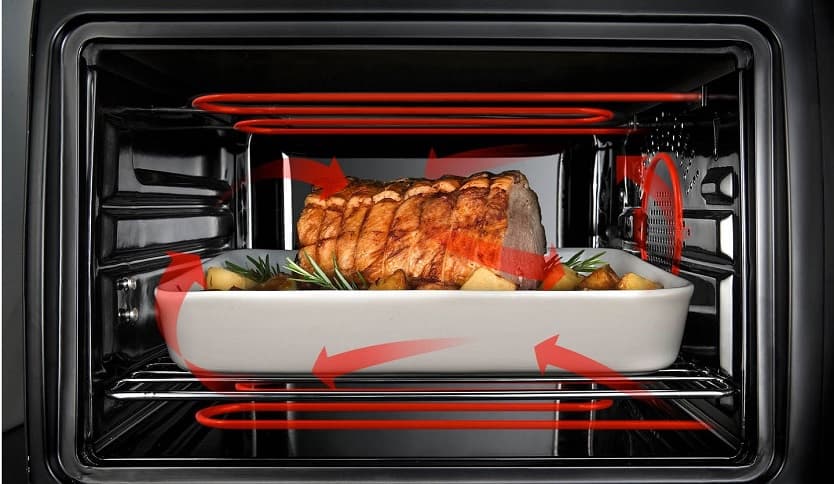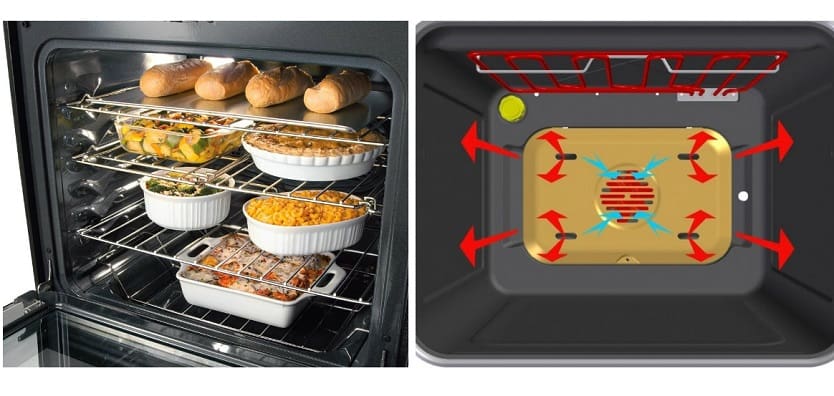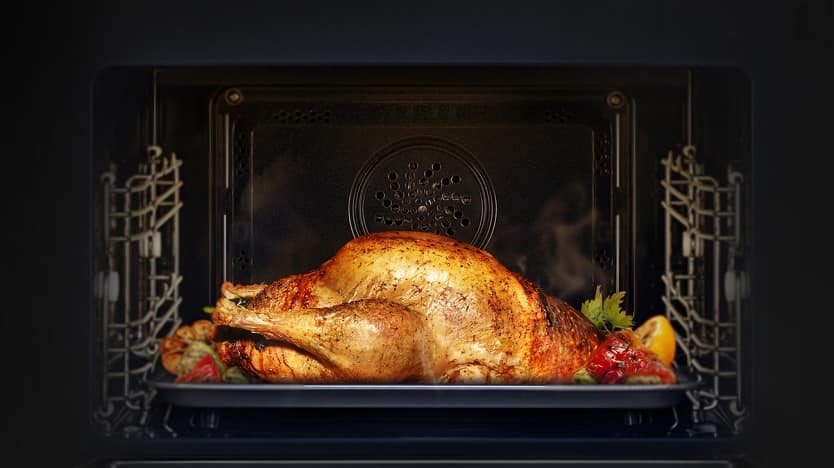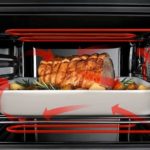Modern manufacturers equip their ovens more functions than significantly increase the cost of the product. Although experience shows that some features and functions remain unclaimed. Let's try to figure out what convection in the oven is for and whether it is worth overpaying for it. After all, an electric oven with convection costs on average 15-25% more than a similar model without this function.
What is it for

Convection (translated from Latin - "transfer") is the creation of forced air movement in the oven. The air flow created by the fan (usually installed at the back) allows warm and cold air to be mixed, thereby creating an even distribution of heat throughout the oven. Regardless of the distance to the heating element, the temperature will be almost the same anywhere in the oven.
To understand what convection is in the oven and what it is for, let's take a closer look at the structure of the oven. In the vast majority of models, heating elements (heating elements) are installed in the upper and lower parts of the oven. There are a number of premium-segment models with heat sources installed on all sides (except for the door) of the oven. But even such an arrangement of heating elements will not ensure uniform temperature distribution throughout the oven.
First of all, it is worth remembering that heating elements cannot be exactly equal in power; over time, their power will decrease due to aging and wear. In this case, the power reduction will occur in different ways. This will lead to the fact that the difference between the amount of heat that comes from above and below will become more and more different. Therefore, the dish on the baking sheet will be baked with different intensities from different sides. And if on the one hand it is already ready, on the other it will still be damp. The situation becomes worse when two trays are installed in the oven at the same time. In this case, the distribution of heat throughout the interior of the oven becomes especially uneven. After all, the baking sheet is a natural barrier. Which, on the one hand, prevents the spread of heat, and on the other hand, absorbs a certain amount of it. Therefore, the temperature in the area between the trays will be significantly lower than in the upper and lower parts of the oven. Uneven heat distribution ultimately negatively affects the quality of food preparation.
See also:
- 6 best ovens VECO 2019
- 7 best Korting ovens according to customer reviews
- The 8 best Hansa ovens of 2019
- Hotpoint-Ariston's 8 best ovens
- The 8 best ovens in Gorenje
Pros of convection in the oven

Convection has a number of advantages:
- The dish heats up evenly from all sides, so all ingredients are cooked evenly. There is no need to rearrange or unfold the trays, the dishes from the text are baked equally throughout the entire depth.
- If the cooking technology is followed, the baked goods do not burn, the dough rises well (fits).
- The cooking process takes less time, including by reducing the heating time of the oven.
- Shorter cooking times can reduce energy consumption.
- Due to the acceleration of the intensity of cooking and the formation of a crust, meat (fish) lose less moisture, remaining juicy.
- Using convection reduces the amount of oil used for cooking.
- Cooking large quantities of baked goods using multiple baking trays without compromising the taste.
- Getting a crispy crust.
- the possibility of cooking large pieces of meat or fish, bread loaves, etc.
By changing the heating temperature, convection allows you to reheat food or defrost food. In addition, the electric convection oven can be used for cooking dried fruits, drying medicinal plants, lemon or orange peel.
In some models with a large oven, manufacturers install two fans at once. This option should be chosen by those who are professionally engaged in baking and produce it in large quantities.
Important:
It is worth overpaying for an additional fan only if more than two baking sheets are constantly used in the oven.
Do I need convection in a gas oven

Despite the fact that gas ovens are often equipped with a convection function, its use is not very effective. First of all, due to the peculiarities of the location of the heating element. In gas ovens, the burner is located at the bottom and is the only source of heat, therefore it is quite difficult to ensure a uniform temperature throughout the entire volume. To do this, the fan must work very hard to create a good air flow. This will not only complicate the combustion process, stripping the flame, but can also completely suppress it. This disadvantage is typical for budget models from little-known manufacturers. They strive to stuff their products with the maximum number of functions, many of which are not fully thought out or incorrectly implemented. So whether convection is needed in the oven is a rather controversial question.
The second point is that there is a constant air circulation in the gas oven, combustion products are removed. Due to leaks, it is quite difficult to achieve a uniform temperature regime throughout the entire volume of the oven; this will require very intensive fan operation.
Steam convection: what are the features
Steam convection (also known as wet convection) is especially popular among supporters of a healthy diet. This function allows you to steam dishes, thereby preserving the high content of vitamins and nutrients. In addition, the dough, treated with steam at the beginning of cooking, rises better and more intensively, and the food does not overcook, remaining juicy.
See also:

